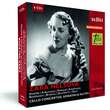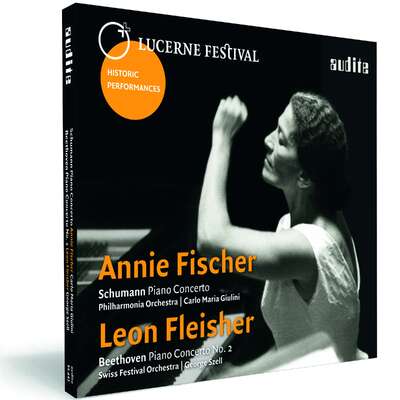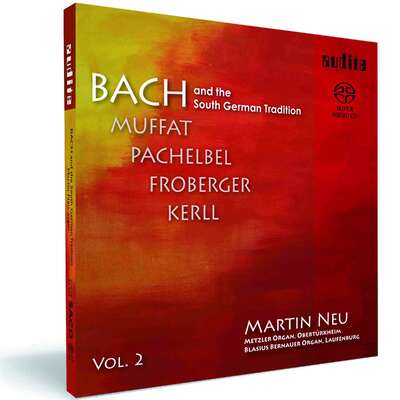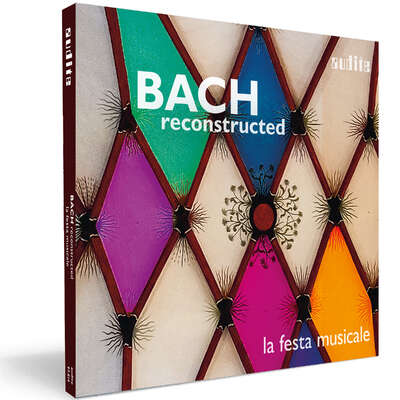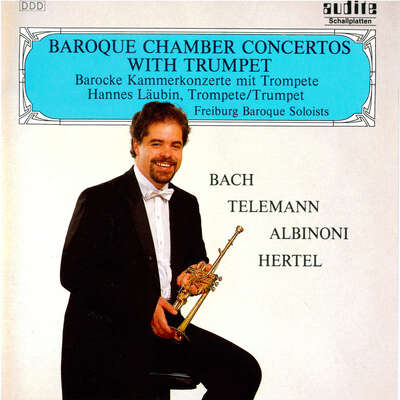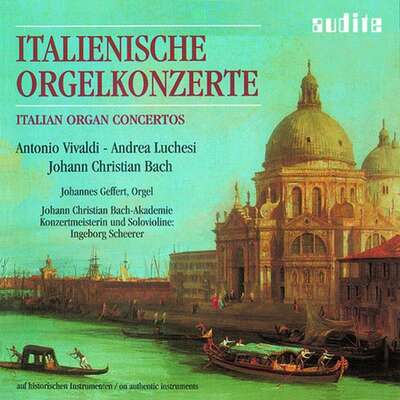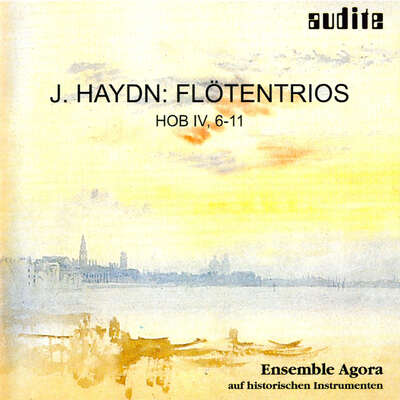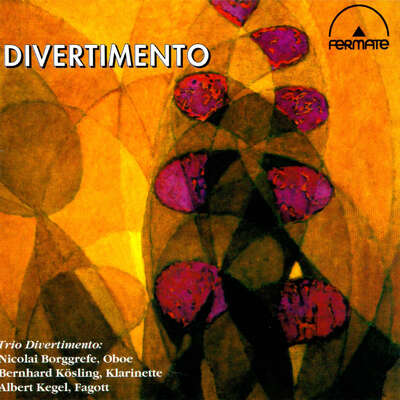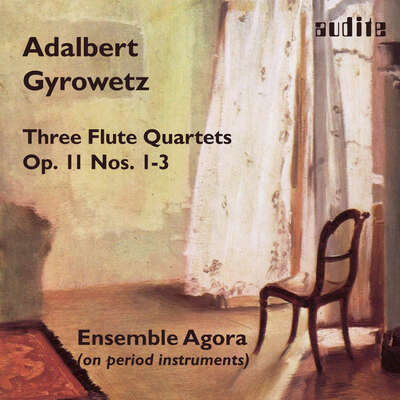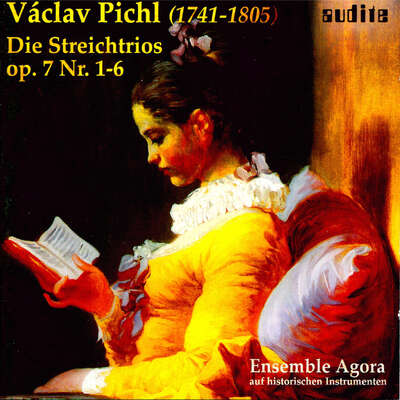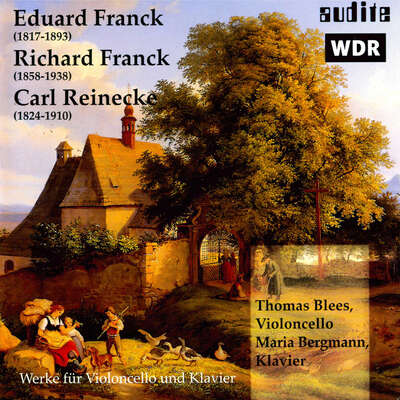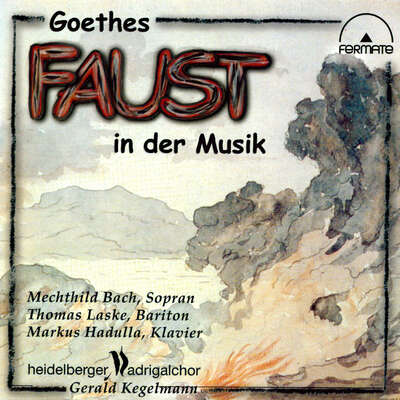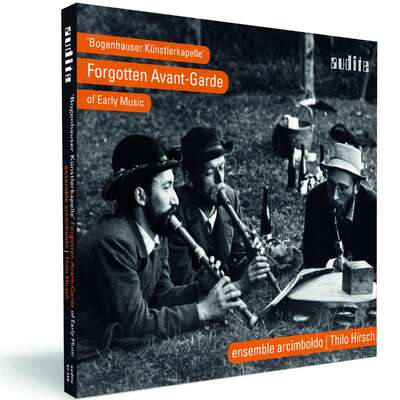
Eine Cellistin auf dem Podium vor einem großen Sinfonieorchester – in der ersten Hälfte des 20. Jahrhunderts eine Seltenheit. Mit Zara Nelsova begann jedoch eine neue Zeitrechnung, sie wurde zu einer Schlüsselfigur in der Geschichte des Cellospiels. Die RIAS-Aufnahmen von 1956 bis 1965 ergänzen die Diskographie der Cellistin substantiell, u.a. mit Werken, die nie für ein kommerzielles Label eingespielt wurden.mehr
"[Nelsovas] Spiel ist erdig gesättigt, melodiös lyrisch, von glühender Eindringlichkeit." (BR 4 Klassik)
Titelliste
Details
|
Portrait Zara Nelsova
Cello Concertos, Sonatas & Suites by Dvořák | Schumann | Milhaud | Kabalevsky | Beethoven | Brahms | Boccherini | Bach |
|
| Artikelnummer: | 21.433 |
|---|---|
| EAN-Code: | 4022143214331 |
| Preisgruppe: | BCF |
| Veröffentlichungsdatum: | 25. September 2015 |
| Spielzeit: | 294 min. |
Zusatzmaterial
Informationen
Eine Cellistin auf dem Podium vor einem großen Sinfonieorchester - in der ersten Hälfte des 20. Jahrhunderts war dieser Anblick eine Seltenheit. Guilhermina Suggia und Beatrice Harrison gehörten zu den ersten, die sich der männlichen Konkurrenz stellten. Mit Zara Nelsova begann jedoch eine neue Zeitrechnung. Die aus einer russischen Musikerfamilie stammende Künstlerin wurde zu einer Schlüsselfigur in der Geschichte des Cellospiels. Ihr cellistisches Können gepaart mit ihrem souveränen Auftreten und ihrem ausgeprägten Personalstil wirkten bezwingend. Zusammen mit der jüngeren Jacqueline du Pré eroberte Nelsova die Konzertwelt für Cellistinnen.
Zara Nelsova profilierte sich als Solistin und Kammermusikerin gleichermaßen überzeugend. Die Aufnahmen aus dem Schallarchiv des RIAS Berlin, die zwischen 1956 und 1965 entstanden, ergänzen die Diskographie der Cellistin substantiell und runden den Eindruck ihres künstlerischen Profils. Darunter befinden sich Werke, die Nelsova nie für ein kommerzielles Label einspielte und die hier erstmals auf Tonträger erscheinen, etwa die Cellokonzerte von Darius Milhaud (Nr. 1) und Dmitri Kabalewski (Nr. 1).
Besprechungen
Crescendo Magazine | Le 2 mars 2016 | Paul-André Demierre | 2. März 2016 Zara Nelsova, une légende du violoncelle
« La reine des violoncellistes », tel est le titre que l’on attribuaitMehr lesen
F. F. dabei | Nr. 04/2016 - Vom 20. Februar bis 4. März | 20. Februar 2016 Cello Cancertos, Sonatas & Suites von Zara Nelsova
Zara Nelsova profilierte sich als Solistin und Kammermusikerin gleichermaßen überzeugend. Die Aufnahmen aus dem Schallarchiv des RIAS Berlin, die zwischen 1956 und 1965 entstanden, ergänzen die Diskographie der Cellistin und runden den Eindruck ihres künstlerischen Profils.Mehr lesen
www.concertonet.com | 02/15/2016 | Florent Coudeyrat | 15. Februar 2016
CD, DVD et livres: l’actualité de février
Le retoure de Zara Nelsova
Nelsova montre tout l’étendue de son tempérament engagé et pétillant. Mehr lesen
Der Kurier | 08.01.2016 | Alexander Werner | 8. Januar 2016 Porträt einer großen Cellistin
Durchweg besticht, mit welcher Intensität Nelsova die Werke durchdringt, wie leidenschaftlich und virtuos, wie eloquent, expressiv und tief empfunden sie aufzuspielen vermag.Mehr lesen
Record Geijutsu | 01.01.2016 | 1. Januar 2016
Japanische Rezension siehe PDF!Mehr lesen
www.pizzicato.lu | 16/12/2015 | Alain Steffen | 16. Dezember 2015 Die erste Cello-Solistin
Zara Nelsova (1918 -2002) war die erste Cellistin, die es in der ersten Hälfte des 20. Jahrhunderts wagte, als Solistin aufzutreten. In dieser CD-BoxMehr lesen
Von den vier Konzerten ist das Dvorak-Cellokonzert das überzeugendste. Dabei muss man vor allem die Leistung des Dirigenten Georg Ludwig Jochum hervorheben. Zusammen mit der intensiv und leidenschaftlich aufspielenden Nelsova gelang ihm zweifelsohne eine Referenzeinspielung des Dvorak-Werkes. Virtuos und spannend erklingt Kabalevskys 1. Cellokonzert unter Gerd Albrecht. Auch das etwas spröde Schumann-Konzert gelingt der Cellistin relativ gut, während das 1. Cellokonzert von Darius Milhaud nicht so richtig packen will. Georg Ludwig Jochum und das Radio-Symphonie-Orchester Berlin begleiten beide Male auf hohem Niveau.
Spieltechnisch ist Zara Nelsova überragend, wenn man allerdings auch anmerken muss, dass durch das große Engagement so Manches unpräzise und bisweilen schlampig daherkommt.
Für Sammler aus dem Bereich der Cellogeschichte nicht uninteressant, sonst aber nicht wirklich relevant.
Zara Nelsova was the first female cello soloist. Audite pays tribute to her work with recordings in various qualities which at the end might just be interesting for cello music collectors.
Nordsee-Zeitung | Sonnabend, 12. Dezember 2015 | 12. Dezember 2015
Feurige Erzählerin am Violoncello
Zara Nelsova war die erste Frau am Cello, die international ein Plattenstar wurde. Ihre RIAS-Rundfunkaufnahmen gibt es jetzt auf vier CDs.
Die berühmten Decca-Aufnahmen sind vergriffen, aber jetzt bringt audite um 1960 entstandene Rundfunkschätze heraus, die Nelsovas Qualitäten ebenso heruasstellen. Die Konzerte von Dvorák, Schumann, Milhaud und Kabalewsky, drei Bach-Suiten, beide Brahms- und drei Beethoven-Sonaten zeigen, welch feurige Erzählerin diese Kniegeigerin war.Mehr lesen
www.musicweb-international.com | Tuesday, November 17th | Stephen Greenbank | 17. November 2015
The Canadian cellist Zara Nelsova (1918-2002) hasn’t been overly represented on CD, and a quick browse on Amazon throws up very little; most seemsMehr lesen
Born in Winnipeg, Canada, she hailed from a musical family; her grandfather was an opera singer, her father a flautist, and her two sisters took up the violin and piano. In 1928 the family moved to London, and the ten year old Zara entered the London Violoncello School. She also had some private tuition from John Barbirolli, who started his career as a cellist. A year later the three sisters formed ‘The Canadian Piano Trio’, which lasted for ten years, travelling quite extensively all over the world. At thirteen Zara performed the Lalo Cello Concerto under Sir Malcolm Sargent. When war broke out, she returned to Canada, and took up the post of principal cellist of the Toronto Symphony Orchestra. Her greatest influences at the time were Casals, Feuermann and Piatigorsky. She was fortunate to be able to study for six weeks with Casals at the Prades Festival in 1948.
By the 1950s Nelsova’s career had reached its peak, and she was dubbed ‘Queen of Cellists’. It had been something of a struggle for her establishing a career as a female in a male-dominated arena. In 1953 she took American citizenship, and from 1962 taught at the Juilliard in New York and the Royal Academy of Music in London. She formed a close friendship with the composer Ernest Bloch, who composed works for her, and she became a great interpreter of his music, especially of the three Solo Cello Suites. Unfortunately, the composer isn’t represented in this compilation, though she did make studio recordings of his music, including three versions of Schelomo (review review review).
A decade before this Dvořák was taped, Nelsova set down a mono recording with Josef Krips and the LSO in the Kingsway Hall, London, issued on CD in Decca’s Original Masters box. Tempi in this RIAS recording are slightly brisker, and the opening movement has more of a spring in it’s step. Krips is too held back for my taste. Nelsova seems to respond with warmer playing, being swept along by the more inspirational conducting of Georg Ludwig Jochum. Even brisker is the version she recorded for Vox (1974) with the Saint Louis Symphony Orchestra under Walter Susskind, again preferable, in my view, to the Krips’. The Schumann Concerto, again under the baton of Georg Ludwig Jochum, is an impassioned and technically accomplished affair. Despite the orchestration being sparse and exposed in places, the conductor points up the orchestral gems that lie within to alluring effect.
Nelsova never made a commercial recording of Kabalevsky’s Cello Concerto No. 1 in G minor, Op. 49, though a filmed version exists on VAI (DVD 4370) in which she is partnered by the Ochestre de Radio-Canada under Alexander Brott. The performance here is given with the Radio-Symphonie-Orchester Berlin and Gerd Albrecht. This is music which deserves to be better known. It is full of gorgeous tunes and is very pleasing to the ear. The performance exudes confidence and excitement. Two extrovert outer movements frame a Largo. Nelsova’s heartfelt rendition of the slow movement has a soulful quality, and this contrasts with a finale which is energized and high-spirited. There’s a Russian flavour to the music, successfully captured in this truly compelling reading. The VAI DVD also contains an alternative version of the Boccherini Cello Sonata No. 4, accompanied by John Newmark. In the version here, the pianist is Lothar Broddack. It’s a two-movement work, an Adagio followed by an Allegro. Nelsova draws a rich burnished tone in the opening movement, and the Allegro is exquisitely phrased and articulated.
Unlike Jacqueline du Pré, Nelsova to my ears is a player who generally keeps her emotions under wraps. Never one to over-gild the lily, I feel that the Schumann Fantasy Pieces, Op. 73 are too reined in and maybe would have benefited from a little more passion and involvement à la Maisky and Argerich. Running for only thirteen minutes, the Milhaud Cello Concerto No. 1, Op. 136 is a little charmer. The opening movement marked ‘Nonchalent’ is exactly that, and breezes along without a care in the world. The sombre, funereal Grave offers a suitable contrast. A joyous romp of a finale sets the seal on a winning performance.
As far as I can ascertain, the three Bach Solo Cello Suites we have here are the only examples of these works in the cellist’s discography, however, she did record Bourrées I and II from the Third Suite, BWV 1009 for Decca in April 1955. What particularly attracts me to these Bach performances is that tempi seem to be just right. There’s rhythmic flexibility and instinctive contouring of the line. Brandishing a commanding technique, intonation is faultless throughout. I have no doubt that she would have picked up a few tips from Casals from ten years earlier at Prades, as these are probing, spiritual and sublime accounts. I’m particularly enamoured of the way she contrasts the dark undercurrents of BWV 1008, with the upbeat character of BWV 1009. Her big, sonorous tone is ideal for this music and listening to these traversals makes me regret that she never recorded a complete cycle.
In 1956, Nelsova recorded the complete Beethoven Cello Sonatas with the Polish pianist Artur Balsam, which are included in the Original Masters box. A few years later she taped three of them for RIAS, the Op 5 Nos 1 & 2 with Lothar Broddack and Op. 102 No. 2 again with Artur Balsam. Though cast in a similar interpretative mould, the RIAS recordings have a much warmer glow and immediacy. I also find Balsam more sympathetic and engaging than Broddack, probably the result of their previous collaboration. In the Brahms Sonatas, Nelsova is paired with Balsam in Op. 38, and Broddack in Op. 99. Both are idiomatic, evenly measured and stylish performances. Nelsova’s rich, full-bodied tone is ideal for this music, and she projects well. Once again, I do prefer Balsam’s artistry over Broddack’s.
Audite have worked wonders in the re-mastering of these original analogue tapes, injecting new life into them. Sound quality throughout is first rate. Norbert Hornig has provided informative annotations in German with English translation by Viola Scheffel. This attractive set should adorn the shelves of any lover of great cello playing.
Audiophile Audition | November 1, 2015 | Gary Lemco | 1. November 2015
The “Queen of Cellists” Zara Nelsova (1918-2002) performs for RIAS inMehr lesen
WDR 3 | 15.10.2015, TonArt von 15.05 - 17.45 Uhr | Stefanie Laaser | 15. Oktober 2015 BROADCAST
Diese umfangreiche Aufnahmen-Sammlung in auch für heutige Hörer ansprechender Tonqualität zeigt, dass Zara Nelsova auf dem Höhepunkt ihrer Karriere eine begnadete und wandlungsfähige Cellistin war, die von ihrem Publikum zurecht verehrt wurde. In den späteren 60er Jahren brach eine neue Zeit an. Mstislav Rostropowitsch und Jacqueline du Pré betraten die Bühne. Zara Nelsova geriet ein wenig in Vergessenheit. Höchste Zeit, diese Grande Dame des Cellos wiederzuentdecken.Mehr lesen
Bayerischer Rundfunk | BR-Klassik, CD-Tipp vom 12.10.2015 | 12. Oktober 2015
BROADCAST
CD-TIPP
Sendebeleg siehe PDF!Mehr lesen
Bayerischer Rundfunk | Bayern 4 Klassik - Leporello - 12.10.2015 | Elgin Heuerding | 12. Oktober 2015
Zara Nelsova spielt
Cellomusik von Bach bis Milhaud
[Nelsovas] Spiel ist erdig gesättigt, melodiös lyrisch, von glühender Eindringlichkeit.Mehr lesen
Süddeutsche Zeitung | Samstag/Sonntag, 12./13. September 2015, Nr. 210 | Harald Eggebrecht | 12. September 2015
Königin der Cellisten
Zara Nelsova war der erste weibliche Weltstar am Violoncello, eine Generation vor Jacqueline du Pre. Eine neue CD-Box belegt eindrucksvoll, mit welcher Intensität und welchem Stolz sie musizierte
Die nun erstmals veröffentlichten Radioaufnahmen, zwischen 1956 und 1965 in Berlin entstanden [...] dokumentieren die unvergleichlichen Qualitäten Nelsovas: den mächtigen, erregten Ton, die Kraft und Energie, die sprühende Virtuosität und den Zugriff, der kein Zögern kennt.Mehr lesen
www.artalinna.com | 10 janvier 2016 | Jean-Charles Hoffelé Nelsova retrouvée
Quelle surprise de recevoir aujourd’hui un précieux coffret de quatre CD regroupant les enregistrements consentis par la violoncelliste canadienne au RIAS de Berlin entre 1956 et 1965. Pas de Bloch, hélas, mais on retrouve quelques œuvres gravées pour Decca, le Concerto de Dvořák et trois Sonates de Beethoven, tout le reste constitue des ajouts au répertoire discographique qu’elle engrangea pour son éditeur. Quelle aubaine !Mehr lesen
Neuigkeiten
The “Queen of Cellists” Zara Nelsova (1918-2002) performs for RIAS in these...
The Canadian cellist Zara Nelsova (1918-2002) hasn’t been overly represented...
